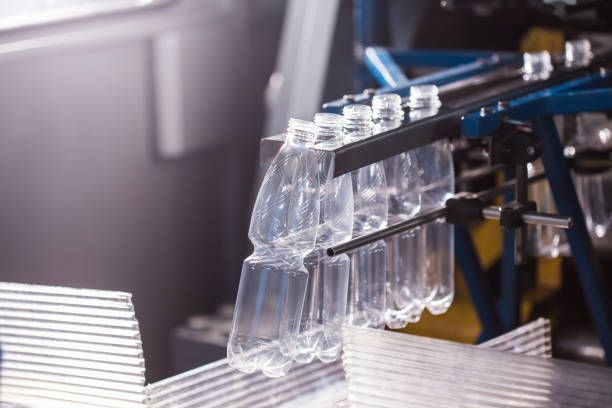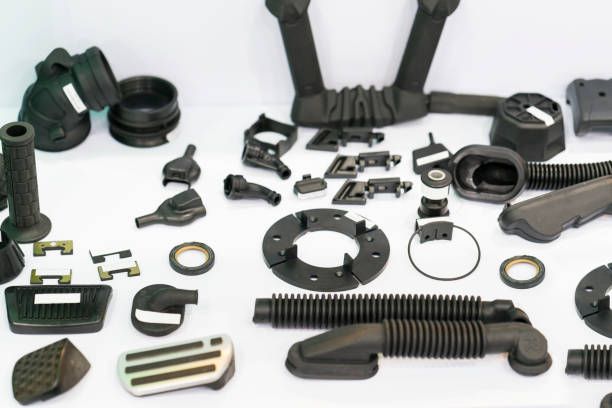Unlock your product's potential with our One-stop solutions!
+86-755-83222882

GET QUOTE
What is the Difference Between PLA and PP Injection Molding?
Injection molding is a highly versatile manufacturing process widely used in various industries to create complex and precise parts. Among the numerous materials used in this process, PLA and PP stand out due to their unique properties and applications. But what is the difference between PLA and PP injection molding? In this article, we'll delve into the intricacies of these materials, their injection molding processes, and their specific applications.
Understanding Injection Molding
What is Injection Molding?
Injection molding is a manufacturing process that involves injecting molten material into a mold to produce parts and products. This method is known for its efficiency, high production rates, and the ability to create intricate designs with tight tolerances. Injection molding is widely used in the production of plastic parts, ranging from everyday household items to critical components in various industries.
The Importance of Material Selection
The choice of material is crucial in injection molding as it determines the final product's properties, such as strength, flexibility, and durability. Different materials offer distinct advantages and challenges, making it essential to understand their characteristics and suitability for specific applications.
PLA Injection Molding
What is PLA?
PLA, or polylactic acid, is a biodegradable thermoplastic derived from renewable resources like corn starch or sugarcane. PLA is known for its environmental benefits, as it is compostable and reduces the reliance on fossil fuels. This eco-friendly material has gained popularity in various industries, especially where sustainability is a priority.
PLA Injection Molding Process
The PLA injection molding process involves melting the PLA pellets and injecting them into a mold. PLA has a lower melting point compared to other plastics, typically around 150-160°C. This characteristic makes it easier to process but also requires careful control of temperature to prevent degradation.
Applications of PLA Injection Molding
PLA injection molding is widely used in the production of biodegradable products, such as disposable cutlery, packaging, and medical implants. Its biocompatibility makes it suitable for applications in the medical and food industries. However, PLA's lower mechanical strength and heat resistance can limit its use in more demanding applications.
PP Injection Molding
What is PP?
PP, or polypropylene, is a versatile thermoplastic polymer known for its excellent chemical resistance, mechanical properties, and low cost. PP is derived from petroleum and is widely used in a variety of applications due to its durability and versatility.
PP Injection Molding Process
The PP injection molding process involves heating the PP pellets to a higher temperature, typically between 180-240°C, and injecting the molten material into the mold. PP's higher melting point compared to PLA allows it to be used in more demanding environments. The cooling process is crucial to prevent warping and ensure dimensional stability.
Applications of PP Injection Molding
PP injection molding is used in a wide range of applications, from automotive parts to consumer goods and medical devices. Its excellent mechanical properties, including high impact resistance and flexibility, make it ideal for products that require durability and long-term performance. PP is also commonly used in the production of packaging, household goods, and automotive components.
Key Differences Between PLA and PP Injection Molding
Material Properties
One of the primary differences between PLA and PP injection molding lies in the material properties. PLA is biodegradable and derived from renewable resources, making it environmentally friendly. In contrast, PP is derived from petroleum and offers superior mechanical properties, such as higher impact resistance and flexibility.
Processing Conditions
The processing conditions for PLA and PP injection molding also differ significantly. PLA requires lower processing temperatures and has a narrower processing window, which demands precise temperature control to avoid degradation. PP, on the other hand, requires higher processing temperatures and is more tolerant to variations in temperature.
Environmental Impact
PLA's biodegradability gives it a significant environmental advantage over PP. PLA products can break down in composting conditions, reducing plastic waste and environmental pollution. PP, while recyclable, is not biodegradable and can persist in the environment for hundreds of years if not properly managed.
Applications and Suitability
The choice between PLA and PP injection molding depends largely on the specific application requirements. PLA is suitable for applications where biodegradability and sustainability are essential, such as disposable cutlery, packaging, and medical implants. PP is preferred for applications that require durability, chemical resistance, and high mechanical strength, such as automotive parts, consumer goods, and industrial components.
Conclusion
In summary, understanding the difference between PLA and PP injection molding is crucial for selecting the appropriate material for your application. PLA offers significant environmental benefits due to its biodegradability and renewable origins, making it ideal for eco-friendly products. PP, with its superior mechanical properties and versatility, is better suited for applications that demand durability and long-term performance.
By carefully considering the specific requirements of your project, including environmental impact, mechanical properties, and processing conditions, you can make an informed decision between PLA and PP injection molding. This knowledge will not only help you achieve the desired performance and sustainability goals but also ensure the efficiency and cost-effectiveness of your manufacturing process.
When it comes to high-quality injection molding services, SZOMK is your trusted partner. With extensive experience in PLA and PP injection molding, SZOMK offers tailored solutions to meet your unique needs. Whether you are looking for eco-friendly options with PLA or robust and durable components with PP, SZOMK's expertise and state-of-the-art facilities ensure that your products are manufactured to the highest standards. With our comprehensive services and focus on quality, SZOMK is the ideal choice for all your injection molding needs. Contact SZOMK today to learn more about how we can support your manufacturing goals and drive your project's success.


